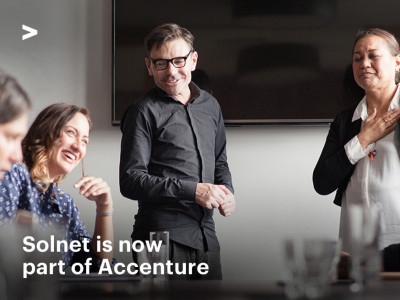Choosing the right platforms to support your digital transformation
In our ongoing series discussing the Four Ps of Digital Transformation, we've examined both People and Process, two areas where developing internal capability and culture plays a significant role. Technological innovation is also at the core of digital transformation, and the aspect where this has the most impact is our third P - Platform.

Successful digital transformation that really makes an impact on processes and customer experience is most effective with the adoption of platforms that provide scale and flexibility.
Today's challenge is that many organisations are carrying significant technical debt and are dependent on legacy platforms that and have lacked investment over the years due to competing priorities. As consumer experience expectations evolve and new front-end technologies become available, those underlying platforms are no longer fit for purpose.
Successful digital transformation can only really happen with the support of modern platform tools.
This presents something of a crossroads - either continue to invest in legacy platforms and develop on top of potentially redundant technologies, or commit to re-platforming, replacing older solutions with modern cloud-based technologies.
The risks of re-platforming
Large enterprises can become so dependent on their legacy technologies for critical business processes, that the notion of re-platforming carries significant risk. The reluctance to re-platform can lead to layers and layers of spaghetti development. Longer term, this situation also carries risk.
Often no single person or function within the business fully understands how the end-to-end systems and technologies fit together. This issue can be compounded by the lack of documentation and key personnel taking knowledge with them when they leave the business.
This concern is understandable on some level - without a clearly defined picture of processes, when you re-platform and reinvent it's possible that elements will be overlooked, which can impact your business.
Computer Weekly notes that research has shown as much as 90 per cent of decision-makers feel hamstrung by legacy systems, preventing them from tapping the benefits of digital technologies.
Digital transformation requires a commitment to new ideas.
To be competitive in today's business environment, however, organisations must be agile, able to move and respond to change quickly. Cloud technologies provide the agility and scalability that modern enterprises require.
The question for these businesses is how many of their applications are suitable to migrate, and how many should be retained on-site. Keeping some infrastructure on-site offers security and data sovereignty benefits; the cloud side of things gives the agility, scalability and flexibility.
Migrating certain business systems to the cloud - most commonly through a hybrid strategy - is an important early step, with integration of legacy systems into new platforms only possible once a suitable cloud infrastructure is in place.
Cloud technologies provide the agility and scalability that modern enterprises require.
While the opportunity to create a more agile business is attractive, there are other benefits of investing in a modern technology platform. Firstly, new digital products that customers are demanding may require a completely different architecture and approach.
Media businesses, for example, didn't have subscription video-on-demand (SVOD) business models a decade ago, so didn't have the need for the SVOD platforms that are commonplace across media businesses today. As digital business models and customer expectations evolve, there's an obvious need to build future-proofed platform capability that can evolve and scale flexibly.
Choosing cloud solutions presents organisations with a wealth of benefits: primarily, that access is available from anywhere on any device, and risks are lower as large cloud service providers such as Amazon or Microsoft Azure can apply their vast resources to security of data and information and uptime.
Gartner estimates that the market for cloud system infrastructure services is projected to grow 42.8 per cent in 2016, indicating the growing support for these solutions.
There's no shortage of reasons to commit to re-platforming, however it's still often a significant task, and gaining organisational buy-in is not always easy. There will be different tasks, processes and skill sets required right across the business, and communications must be prioritised to keep everyone involved well aware of what the strategy is and why.
Checklist for success
1. Create an accurate catalogue of existing platforms, services and processes.
2. Examine where existing infrastructure is clearly understood, and where there are knowledge gaps.
3. Work with all departments to understand and prioritise the legacy technology pain points.
4. Simplify all business processes by really challenging underlying assumptions
5. Reduce risk by adopting solutions from well-established providers such as Amazon, Google or Microsoft Azure.
6. Seek strategic advice from consultants, experienced professionals that can guide your organisation towards successful digital transformation.
De-risking platform migrations
There are a number of techniques available to businesses looking to de-risk platform migration projects.
Firstly, independent reviews are helpful to challenge assumptions and sense check project plans, resource requirements and architectural plans.
Secondly, an end-to-end technology proof of concept across key customer journeys can help prove that the underlying technology assumptions will in fact deliver the desired outcomes.
Finally, Solnet has developed a rapid prototyping environment that can emulate the business processes and digital experience to let stakeholders interact with the digital channel experience before any significant commitment to platform development. The ability to view and adjust the UX and integration points in real-time can be incredibly valuable and save a lot of pain when the actual development begins.
Get in touch today for strategic advice and assistance with your enterprise platforms.


